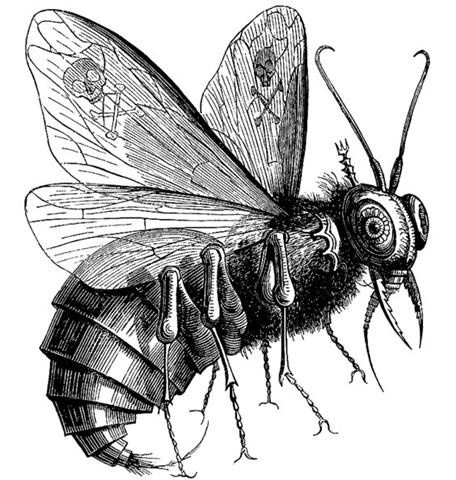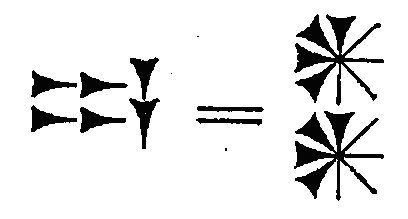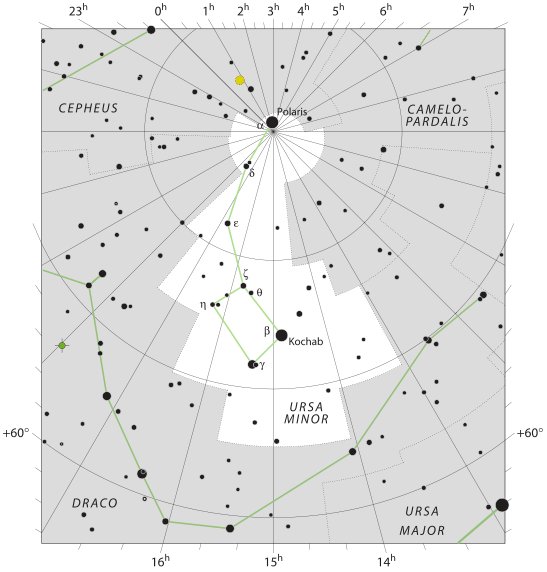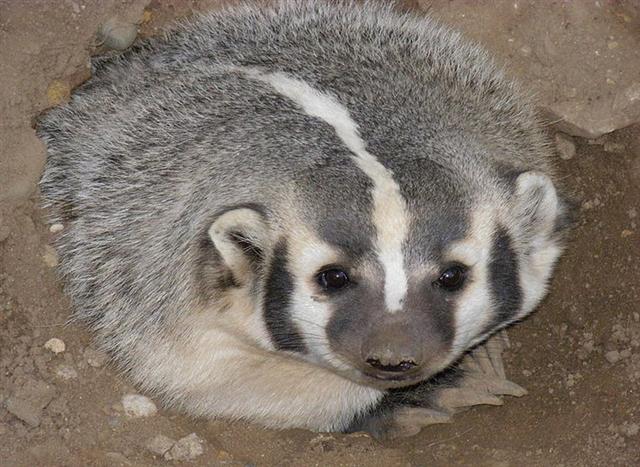Counting ahead from the synchronization at Bharani / Zuben
Elgenubi should then move us quickly to the Pleiades:
|
SHERATAN (*27.4) |
14 |
BHARANI (*41.4) |
14 |
THE
PLEIADES (M45) |
159 |
ARCTURUS (*215.4) |
|
TAU-ONO
(*55) |
|
TEMENNU
(*56) |
|
6 * 29 = 348 /
2 = 16 + 2 * 79 |
|
14 + 6 * 29 = 188 |
|
TERMINALIA |
BISSEXTUM |
25 |
FEBR
26 |
2-27
(58) |
28 |
MARCH
1 |
|
... The
leap day was introduced as part of the
Julian reform. The day following the
Terminalia (February 23) was doubled,
forming the 'bis sextum -
literally 'double sixth', since February
24 was 'the sixth day before the Kalends
of March' using Roman inclusive counting
(March 1 was the 'first day') ... |
 |
 |
 |
 |
 |
 |
 |
|
Cb1-12 (404) |
Cb1-13 |
Cb1-14 |
Cb1-15 |
Cb1-16 (408) |
Cb1-17 |
Cb1-18 |
| manu
rere - kua rere ga manu - ki te ragi |
eaha
te nuku erua |
koia
kua huki |
e niu
tu |
ki te
ariki - e ka hua ra tona rima |
koia
kua iri i ruga o te rima - e o to vaha
mea |
manu
moe ra |
|
Nuku.
1. Pau.: nuka, crowd,
throng. Ta.: nuú, army, fleet.
Mg.: nuku, a host, army. 2. Mgv.:
nuku, land, country, place. Sa.:
nu'u, district, territory,
island. Churchill.
Niu.
Palm tree, coconut tree; hua niu,
coconut. Vanaga. Coconut, palm,
spinning top. P Pau., Ta.:
niu,
coconut. Mgv.:
niu,
a top;
niu mea, coconut. Mq.:
niu,
coconut, a top. Churchill. The fruit of
miro.
Buck. T. 1. Coconut palm. 2. Sign for
peace. Henry. The sense of top lies in
the fact that the bud end of a coconut
shell is used for spinning, both in the
sport of children and as a means of
applying to island life the practical
side of the doctrine of chances. Thus it
may be that in New Zealand, in latitudes
higher than are grateful to the coconut,
the divination sense has persisted even
to different implements whereby the
arbitrament of fate may be declared.
Churchill 2.
Moe.
To sleep, to lie at full length, to
dream, to brood, to place, to cohabit;
moe atu, to leave off, to desist;
moe atu ra, to adjourn, to
postpone; moe hakahepo, to talk
in the deep; moe aherepo,
somnambulist, sleepwalker; moe
hakataha, to sleep on the side;
moe no, to oversleep, concubinage;
moe tahae, to be a light sleeper;
moe tahaga, a sleeper;
moe vaeahatu, moe hakaroa, to
sleep sprawling; rava moe, to
sleep sound; ariga moe ki raro,
to lie flat on the ground; tae moe,
bachelor; hakamoe, to brood, to
fold the wings; to reserve, to lay up;
to struggle. P Pau.: moe, sleep.
Mgv.: moe, sleep, to lie down,
coitus, to shut the eyes. Mq.: moe,
to sleep, to lie down; haámoe, to
set down on the ground. Ta.: moe,
to sleep, to lie down. Moea raruga,
lying flat. Moeaivi, thin. Mq.:
ivi, haáivi, id. Ta.:
ivi, id. Moega, mat. Pau.:
moehega, bed. Mgv.: moega, a
sleeping mat. Mq.: moena,
moeka, mat, floor cloth, bed. Ta.:
moea, bed. Moemata, to
sleep with the eyes open; mea moemata,
phantom. Moemoea, a dream,
vision; tikeahaga moemoea,
apparition by night. T Mgv., Mq., Ta.:
moemoea, dream. Churchill. Mgv.
Moemoe, to steal, to purloin at a
food distribution. Mq.: moemoe,
to seize, to grasp. Churchill. Ta.: 1.
Moemoe, ambush. Ha.: moemoe,
id. 2. Moemoe, Phyllanthus
simplex. To.: mohemohe, a tree.
Churchill. Mq.: Moehu, exiled,
banished, prisoner of war. Ma.:
morehu, a survivor. Churchill. |
|
ν Arietis (38.5), δ, ε Ceti (38.8)) |
μ
Arietis (39.4),
HEAD OF THE FLY = 35 Arietis
(39.6),
KAFFALJIDHMA (Part of a Hand)
=
γ
Ceti,
θ
Persei (39.8)
*363.0
= *39.4 - *41.4 |
π
Ceti,
ο
Arietis (40.0),
ANGETENAR (Bend in the River)
=
τ¹
Eridani,
μ
Ceti (40.2),
RIGHT WING = 39 Arietis
(40.9) |
Bharani-2 (Yoni) /
Stomach-17 (Pheasant)
π
Arietis (41.2),
MIRAM (Next to the Pleiades)
=
η
Persei
(41.3),
BHARANI = 41 Arietis (41.4),
τ²
Eridani,
σ
Arietis (41.7) |
TA LING (Great
Mound) = τ Persei (42.4)
*1.0 =
*42.4 - *41.4 |
ρ
Arietis (43.0),
GORGONEA SECUNDA =
π
Persei
(43.5),
ACAMAR (End of the River)
=
θ
Eridani
(43.6),
ε
Arietis (43.7),
λ
Ceti (43.9)
DENEBOLA (β Leonis) |
MENKAR
(The Nose)
=
α
Ceti
(44.7) |
 |
|
28 (4 * 29½) |
29 (*39) |
April 30 |
May 1
(11 * 11) |
2 |
3 (123) |
4 |
|
'April 1 (13 * 7) |
2 |
3 |
4 (*14) |
5 |
6 (96) |
7 |
|
"March 18
(77) |
19 (*364 / *363) |
20
(*364) |
21 (0h) |
8 (81) |
9 |
10 |
|
CLOSE TO THE FULL MOON: |
|
AUG 25 |
26 |
27 |
28
(240) |
29 |
30 |
31 |
|
ρ Lupi (221.0),
TOLIMAN
= α Centauri
(221.2), π Bootis (221.8), ζ Bootis
(221.9) |
31 Bootis
(222.0),
YANG MUN (South Gate)
=
α
Lupi
(222.1),
RIJL AL AWWA (Foot of the Barker)
=
μ
Virginis
(222.5),
ο
Bootis (222.9) |
IZAR (Girdle)
=
ε
Bootis
(223.0),
109 Virginis,
α
Apodis (223.3),
μ
Librae (223.8) |
Al Zubānā-14a (Claws) /
Visakha-16 (Forked) /
Root-3 (Badger)
ZUBEN ELGENUBI (Southern Claw)
=
α
Librae
(224.2),
ξ
Bootis,
ο
Lupi (224.5) |
KOCHAB (Kakkab)
= β Ursae Min.
(225.0), ξ Librae (225.7) |
KE KWAN (Cavalry Officer) =
β Lupi
(226.3),
KE KWAN =
κ
Centauri (226.4),
ZUBEN ELAKRIBI (Claw of the Scorpion)
=
δ
Librae
(226.8),
π¹
Oct.
(226.9)
*185.0 = *226.4 - *41.4 |
ω Bootis (227.2),
NEKKAR (Herdsman)
= β Bootis
(227.3), σ Librae (227.5), π² Oct.
(227.7),
NADLAT (Mean Little Ones)
= ψ Bootis
(227.8), π Lupi (227.9) |
|
...
at the ancient time of Bharani the star
at the North Pole was not Polaris but β
Ursae Minoris - Kochab (as in Babylonian
Kakkab = Star) ...
Kochab was at the opposite side of the
pole compared to Polaris, and thus also
at the opposite side in the right
ascension circle. It meant Kochab was
not very far from the Full Moon when the
Sun was at Polaris ...

 |
|
Oct 28 (301) |
29
(*222) |
30 |
31 |
Nov 1 |
2 |
3
(*227) |
|
'Oct 1 |
2
(*195) |
3 |
4 (277) |
5 |
6 |
7
(*200) |
|
"Sept 17 (260) |
18 (*181) |
19 |
20 |
21
(264) |
22
(*185) |
23 |
 |
 |
 |
 |
|
Cb1-19 |
Cb1-20 |
Cb1-21 (413) |
| ki to mata |
e nuku mata |
hoea |
|
May 5 (125) |
6 |
7 |
 |
 |
 |
|
Cb1-22 |
Cb1-23
(415) |
Cb1-24 |
| ko te rima |
kua oo ki
te vai |
ma te ua |
|
May 8
(128) |
9 |
10 |
 |
 |
 |
|
Cb2-1 |
Cb2-2
(418) |
Cb2-3 |
| Eaha te
honu kua tupu |
i to
maitaki - o te hau tea |
te hono
huki - maro |
|
May 11 |
12 |
13 (133) |
 |
 |
 |
 |
|
Cb2-4 (420) |
Cb2-5
(29) |
Cb2-6 |
Cb2-7 |
| te ua |
koia ra |
kua tuku
ki to mata - ki tona tukuga |
e kiore -
henua - pa rei |
|
Ua.
1. Cause, reason why something happens or is
done; he ûa te ua, au i-ta'e-iri-ai ki
tooku hare, because of the rain, I did
not go home; ua kore, without cause,
without reason. 2. Ceremononial stave with a
human face carved at one extremity. Vanaga.
Cfr toko. 1. A long club T. 2. Mgv.:
ua, the genitalia. Ta.: hua,
id. Mq.: hua, id. Ha.: hua,
testicles. 3. Ta.: ua, the back of
the neck. Ma.: ua, id. Sa.: ua,
the neck. 4. Ta.: ua, a land crab
which shears iron. Ma.: uka, lobster.
Sa.: uga, the hermit crab. Churchill.
Ûa.
Rain; 1. ûa hakamito, persistent,
but not strong, rain; 2. ûa kura,
fine rain, drizzle; 3. ûa matavaravara,
strong rain; 4. ûa parera,
torrential rain; 5. ûa tai, rain
followed by fair weather at sea. Ehu ûa,
drizzle. Vanaga.
Ûaûa.
Tendons, muscles. 1. Hau ûaûa
kio'e, line made from rats' tendons. 2.
Ûaûa toto, vein, artery. 3. Ûaûa
piki, spasm. Vanaga. 1. Rain; hoa mai
te ua, to rain; mou te ua, to
cease raining. P Mgv., Mq., Ta.: ua,
rain. 2. Vein, artery, tendon (huahua
1) (uha
G); ua nene,
pulse; ua
nohototo, artery,
ua gaei,
pulse. Uaua,
vein, tendon, line;
kiko uaua,
muscle T.
Hakauaua, to mark with lines. P
Pau.:
tare-ua, tendon. Mgv., Mq., Ta.:
uaua,
vein, tendon. Churchill.
U'a.
Of the tide, to reach its maximum;
tai u'a, high tide. Vanaga. Wave, surge;
tai ua, high tide. Churchill.
Uá. Ata uá,
morning twilight.
Uáuá,
to reside; resident; noho uáuá to
settle somewhere; ina koe ekó noho uáuá,
do not establish yourself there. Vanaga. |
|
May 14 |
15 (500) |
16 (136) |
17 |
The Pleiades were associated with the beginning of
the year and according to my assumed epoch for
rongorongo the 'Foundation Stone' (Babylonian;
Temennu) - i.e. Alcyone in the
Pleiades - rose heliacally in May 16.
The Polynesian name Tau-ono for the Pleiades
- the 6 'stones' - was on the other hand presumably
associated with the first day of the Pleiades.
|
April 17
(107)
SHERATAN (*27.4) |
14 |
May 1
(121)
BHARANI (*41.4) |
14 |
May 15
(500)
TAU-ONO (*55) |
May 16
(136)
TEMENNU (*56) |
159 |
Oct 22
(295)
ARCTURUS (*215.4) |
|
188 (=
28 + 160) |

... To a
casual glance, the Pleiades cluster appears as a
fuzzy patch like a swarm of flies over the back of
the bull ...
According to mythology,
Alcyone and Celaeno were both seduced by
Poseidon. Maia, the eldest and most beautiful
of the sisters, was seduced by Zeus and gave birth
to Hermes; she later became foster-mother to Arcas,
son of Zeus and Callisto. Zeus also seduced two
others of the Pleiades: Electra, who gave
birth to Dardanus, the founder of Troy; and
Taygete, who gave birth to Lacedaemon, founder
of Sparta. Asterope was ravished by Ares and
became mother of Oenomaus, king of Pisa, near
Olympia, who features in the legend of Auriga. Hence
six Pleiades became paramours of the gods. Only
Merope married a mortal, Sisyphus, a notorious
trickster who was subsequently condemned to roll a
stone eternally up a hill
...
... The Pirt-Kopan-noot tribe of
Australia have a legend of a Lost Pleiad, making
this the queen of the other six, beloved by their
heavenly Crow, our Canopus, and who, carried away by
him, never returned to her home ...
.jpg)
|

















.jpg)